Вы здесь
Babur about Fergana.
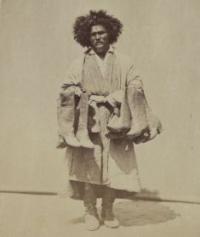
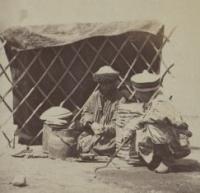
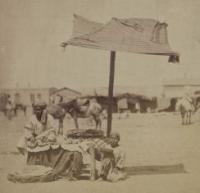
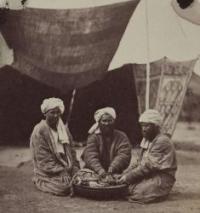
Tours to Fergana.
«One of the cities on the southern coast is Andijon, which is located in the middle. It is the capital of the region of Fergana. There is plenty of bread and fruits are plentiful, melons and grapes are good; during the ripening of melons [because of the abundance] it is not customary to sell them from a melon, there are no better Origidzhan pears»
Events of the year eight hundred and ninety ninth (1493 - 1494 years).
Exclusive tours and excursions to Fergana.
In the name of Allah, Most Gracious, Most Merciful!
In the month of Ramazan, eight hundred and ninety ninth, I became the sovereign of the Ferghana region in the twelfth year of life. Fergana - an area in the fifth climate, located on the border of cultivated land. In the east of it, Kashgar, in the west, Samarkand, in the south, the mountains of the Badakhshan border; in the north, although there used to be such cities as Almalyk, Almaty and Yangi, whose name is written in the books of Otrar, but now because of [the invasions] of Mughal and Uzbeks, they were destroyed and there were no settlements left.
Fergana is a small area, there is a lot of bread and fruits there. Around Fergana there are mountains; from the western outskirts, where Samarkand and Khojend, there are no mountains; in winter, from no side except this one, the enemy cannot pass.
The Seihun River, known as the Khojend Waters, comes to Fergana from the northeast side; passing through this region, it flows westward, passes north of Khojend and south of Finaket, which is now better known as Shahrukhia, then again dodges northward and flows towards Turkestan; well below Turkestan, this river, not merging with any [other] river, all is absorbed into the sand and [disappears].
There are seven cities in Fergana; five of them are on the south bank of the Seykhun River, two on the north bank.
One of the cities on the southern coast is Andijon, which is located in the middle. It is the capital of the region of Fergana. There is plenty of bread and fruits are plentiful, melons and grapes are good; during the ripening of melons [because of the abundance] it is not customary to sell them from a melon, there are no better Origidzhan pears.
In Maverannakhr, except for Samarkand and Kesh, there is no more fortress than Andijon. The city has three gates, the arch of Andijana is located on the south side. Water enters [into the city] through nine channels; [most] amazing that she [then] does not go in any place.
Around the fortress, on the outer side of the moat, there is a large road paved with rubble; The fortress is surrounded by suburbs everywhere, separated from the fortress by a moat, on the edge of which a large road stretches.
There are a lot of game, pheasants are incredibly fat; told that four people, having started pheasant with seasoning, cannot finish it off. The inhabitants of Andijon are all Turks; in the city and in the bazaar there is no person who would not know Turkic.
The talk of the people is similar to the literary one; the writings of the World of Alisher Navoi, although he grew up and was raised in Herat, [written] in this language. There are many handsome men among the inhabitants of Andijan; Khoja Yusuf, who is famous in music, is a Candidate.
There is rottenness in the air of Andijon; in the fall, many suffer from fever. Another city is Osh. It stands southeast [more - to the east] from Andijan, four yigachi paths; the air there is beautiful, there is plenty of running water; Spring is very good. About the merits of Osh came many legends.
Southeast of the fortress stands a beautiful mountain called Bar-Kuh. At the top of this mountain, Sultan Mahmud Khan built hujra. Below it, on the ledge of the mountain, I also built a hudjra with an aivan in the nine hundred and second year.
Although his hujra is higher than mine, but mine is much better located: the whole city and its suburbs are spread under it. The Andijon River, passing through the outskirts of Osh, flows into Andijon. On both banks of this river there are gardens, all the gardens towering above the river. Violets are very beautiful in them.
There is flowing water in Osh, spring is very good there: a lot of tulips and roses are blooming. At the foot of Mount Bar-Kukh, between the mountain and the city, there is a mosque, called the Jauza Mosque. A large stream flows along the mountainside.
The outer courtyard of the mosque is somewhat sloping, there is a pleasant, shady lawn, covered with shamrock; every traveler and wanderer, passing, rests there. In Osh, there is such fun: for anyone who falls asleep on the lawn, water is let out of this stream.
In the last years of his life, Omar Sheikh Mirza found a stone with white and red streaks on this mountain. Handles of knives, belt buckles and other things are made of it. This is a very good stone. In the region of Fergana, there is no city equal to Osh in terms of amenity and clean air.
Another city is Marginan, west of Andijon, seven yigachas away. This is a good city, full of all grace. Grenades and dried apricots there are plentiful and good. There is one sort of pomegranate that called donakalan; in its sweetness a slight pleasant [sour taste] of apricot is felt.
[These grenades] may be preferred over Semnan grenades. There is also a sort of apricot, from which the bones are taken out, [and instead of them] the nucleoli are placed inside [of the fruit] and dried; call him Subhani, he is very tasty.
The game is good there; white kiyiki come close. The inhabitants of Marginan are Sarts; it is a pugnacious and restless people. The custom of fighting with fists is common in Maverannahr; Most of the famous fist fighters in Samarkand and Bukhara are Marghinans.
The author Hidayi is a native of the village of the Marginan region, called Rishdan. Another city is Isfara. He stands in the foothills. There are flow channels and pleasant gardens. [Isfara] is located southwest of Marginan, between Marginan and Isfara is nine yigach way.
There are many fruit trees there, but almond trees dominate the gardens. All Isfara residents are Sarts and speak Persian. In one sheri south of Isfara among the hills lies a block of stone called Sangi-i Ain. The length {stone} will be approximately ten kari, but the height in other places will be the height of a person, where below it will be a person to the waist.
ll things are reflected in it, as in a mirror. Isfara is a mountainous area of four bouluques. One is called Isfara, the other is Barukh, the third is Suk and the fourth is Hushyar. When Mohammed Sheybani Khan, defeating Sultan Mahmud Khan and Alacha Khan, took Tashkent and Shahrukhiyu, I entered this mountainous region of Suha and Khushyar: enduring hardships, I spent about a year there, then went to Kabul.
Another city in Fergana is Khojend. It is located from Andijon to the west in twenty-five yigachah way; from Hojund to Samarkand also twenty-five yigachi paths. It is one of the ancient cities; Shaykh Maslakhat and Khoja Kamal [originate] from it.
The fruits there are very good, the Khojend pomegranates are famous for their excellent quality. As they say: "Samarkand apples", so they say: "Hojand grenades". But at the present time, Marginan grenades [are] much better.
Hojund fortress stands on a high place. The Seihun River flows past Khojand from the north, at a distance of an arrow from the fortress. To the north of the fortress and the river stands a mountain called Mutu-Gil; they say there are turquoise deposits and other mines on this mountain.
There are many serpents on the mountain. Hohende has great places to hunt animals and birds. White kiyiki, deer, Bug-marals, pheasants and hares are found there in a multitude. The air in Hozhende is very putrid; in the fall many are in a fever.
They said that even the sparrows fever. They say that the air there is putrid because of the mountains on the north side. One of Khojendu's subordinates was Cand-i Badam. This, however, is not a city, but a pretty town. Almond in it is excellent; for this reason [Cand-i Badam] is named after this name.
All his almonds go to Hurmuz and to Hindustan. From Hozhende [Kand-i Balam] is located in five-six yigachas to the east. Between Hodjend and Kand-i Badam there is a steppe called Ha-Dervish. In this steppe the wind always blows; to the east in Marginan the wind rushes from there; to the west, to hogend, the wind constantly blows from there.
There are strong whirlwinds. It is said that several dervishes fell into this desert in a severe hurricane. [They swept away], and they could not find each other; they began to shout "Ha, dervish, ha, dervish," until everyone died. Since then, this desert and called Ha-Dervish.
One of the cities on the north bank of the Seihun River is Ahsi; in the books, this [name] is written: Ahsiket, just as the poet Asher ad-din is called As ir ad-din Ahsiketi. In Fergana, after Andijan, there is no city anymore. From Andijon to the west [to Ahsi] there are nine yigachas.
Omar Sheikh Mirza made it his capital. The river Seihun flows under the fortress. The fortress stands on a high yar. Instead of a moat, deep ravines serve there. Omar Sheikh Mirza, when he made Ahsi his capital, once more or two dug ravines further outside the fortress.
In Fergana, there is no [other] such impregnable fortress. The suburbs stretch over a sheri from the fortress. The saying: “Where is the village and where are the trees?” Was probably said about Ahsi. Melons are good there; there is one sort of melon. called peace-timuri; it is not known whether such melons exist anywhere else in the world.
The Bukhara melons are also famous. [But] when I took Samarkand and ordered to bring melons from Ahsi and from Bukhara and ordered them to be cut at one meeting, [that] Ahsi melons were beyond comparison.
The game in Ahsi is very good. The side of the river Seihun, where Ahsi stands, is a steppe; there are many white kiyikov. The Andijan side is [densely] dense shrub; there are many bugs, red deer and hares, they are very fat.
Another [city] is Kasan, it is located north of Ahsi. This is a smaller city. As the Andijan River flows from Osh, the Ahsi River flows from Kasana. This is a terrain with beautiful air. Since her beautiful gardens are all on the banks of the river, they were called "merluchek fur coat".
Residents of Osh and Kasama boast of pleasantness and clean air [of their cities]. In the mountains surrounding the Fergana region, there are good letovki, on these mountains a tabulgu tree grows - it is not found anywhere else. Tabulgu - a tree with red bark; staves are cut out of this tree, whip handles are made, and bird cages are made.
Having planed a tree, they make eyeless arrows. This is a very good tree. It is brought as a gift to faraway places. In some books they write that the “apples” are growing on these mountains, but now nothing is heard about it. I heard about one grass that grows in the Yeti-Kent mountains.
The local people call this grass "aik-uti" and it has the properties of grass "mihr-giyah." Perhaps these are the worlds, and those people call her by the name [aik-uti]. In these mountains there are turquoise placers and iron mines.
With revenues from the Fergana area, it is possible, if justice is observed, to contain three or four thousand people.
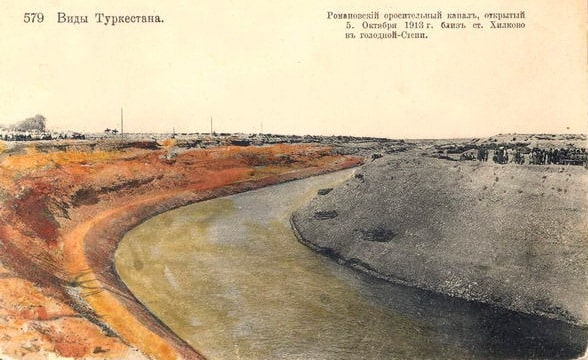
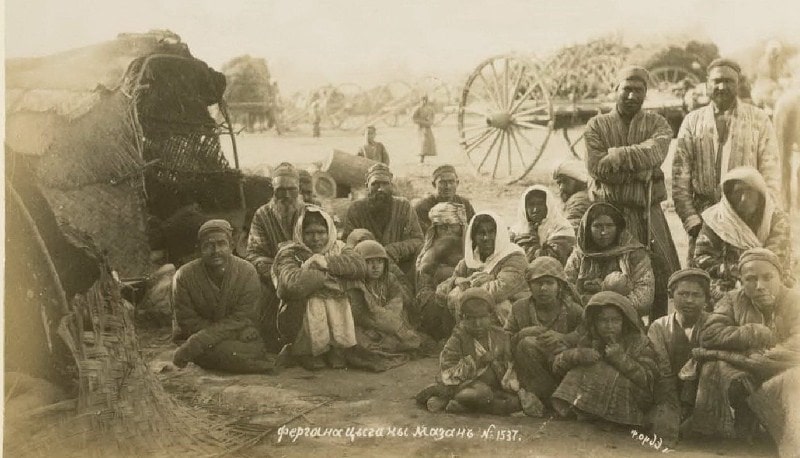
Notes:
Notes to the translation of Babur-name were compiled by M.Salier, Candidate of Philological Sciences and D.G. Voronovsky, Candidate of Historical Sciences.
The following abbreviations are used in the text of the notes:
1) the years of the hijra and AD given through the equal sign, without an era,
2) approx. - about;
3) p - born;
4) mind. - died.
Double dates in parentheses indicate the time of the reign of the Khan, the Shah, etc.
Geographical locations within the present territory are indicated by the current administrative division; the rest are like Babur’s, that is, without distribution to countries (India, Pakistan, Afghanistan, etc.).
899 AH = 1494 n. e. (hereinafter, both dates are given through the equal sign without specifying the calendar).
Authority:
Bayur-Nama. Zahir ad-Din Mohammed Babur. 1483 - 1529 Text is printed by edition. "Babur-name", Notes by Babur, Chief editorial encyclopedia of the Institute of Oriental Studies, Academy of Sciences of Uzbekistan, Tashkent, 1993. ISBN 5-89890-060-8
Photos
from Turkestan album. Published in 1872 in St. Petersburg, by order of the first Tashkent Governor-General Konstantin Petrovich von Kaufman. The album included four parts: the archaeological (two volumes), the ethnographic (two volumes), the crafts of the peoples of Central Asia (the trade) and the historical part. The number of photos is more than 1200. Compiled by A. L. Kuhn (1871 - 1872). The collection of materials for a multi-volume publication for more than two years was carried out in the military topographic department of Tashkent, where lithographic parts of each plate were printed. A complete set of all volumes and parts of this book is stored today only in three collections: in the National Library of Uzbekistan in Tashkent, in the V. Lenin State Library in Moscow and in the Library of the US Congress in Washington. Each of the six volumes of the Turkestan Album is a huge folio, upholstered in green leather, 45 by 60 centimeters in size. Each page of the publication contains from one to eight photos, made with the technology of albumen printing (based on egg white). In 2007, the National Library of Congress completed the full digitization of all pages of the Turkestan Album.







